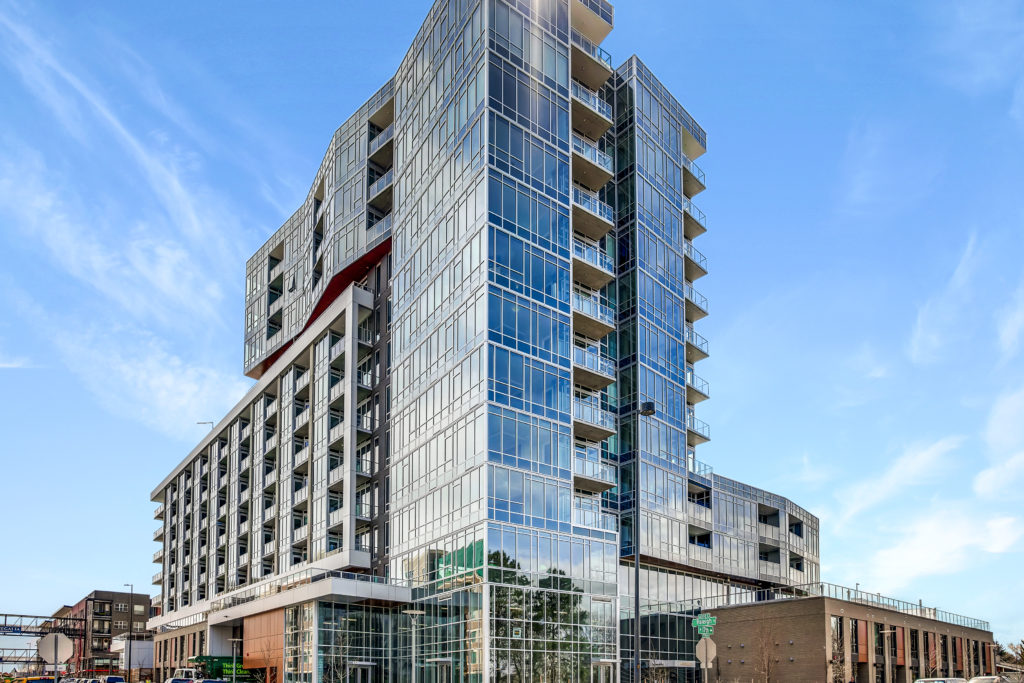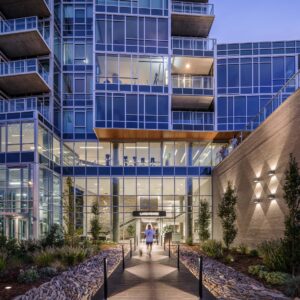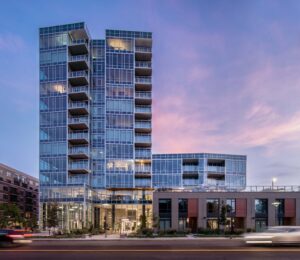
Colorado’s first WELL-Certified residential community showed 36 statistically significant physical, social and emotional benefits of wellness-focused design and operations.
NAVA Real Estate Development (NAVA), in partnership with Colorado State University’s (CSU) Institute for the Built Environment (IBE), has announced the completion of a three-year research study on Lakehouse, Colorado’s first WELL-Certified multifamily residential community. Through the study, which aimed to better understand how thoughtful and sustainable design can influence the health and wellness of occupants, CSU researchers found evidence of increased satisfaction and improved physical and emotional well–being among residents who resided in Lakehouse.
Lakehouse is a 12-story, 196-unit community, located minutes west of downtown Denver in the Sloan’s Lake neighborhood and uniquely designed to promote the health and well-being of its residents. In addition to being the first of its kind in Colorado, Lakehouse is one of the first residential developments in the world to earn WELL Gold Certification from the International WELL Building Institute (IWBI). The IWBI’s WELL Building Standard™ is a globally recognized program that integrates human health and wellness best practices into the design, construction, maintenance and operations of the built environment to optimize the resident experience.
“At NAVA, we not only believe but can now demonstrate the importance of placing human health and well-being at the forefront of building design,” said Brian Levitt, president and co-founder of NAVA Real Estate Development. “With these critical findings, we hope to be the model for residential projects everywhere with regard to the social and economic benefits of prioritizing human and environmental health in our built environment.”
The study used pre- and post-occupancy surveys, as well as interviews, to assess 83 variables across four core areas: satisfaction with the building/community, social connections, emotional health and physical health. There were statistically significant improvements in almost 45% of the variables measured, showing that overall, residents experienced a positive change in their perceived health, well-being, and happiness after moving into Lakehouse.
Residents reported increased satisfaction with Lakehouse’s natural light, air quality, acoustics, safety, on-site fitness equipment and classes, urban farm and community kitchen. Social connections were likely improved due to Lakehouse’s inviting and expansive communal spaces, farm-to-table shared kitchen and group cooking classes, among extensive resident events and programming. On average, residents considered 10 more neighbors to be acquaintances and two more neighbors to be friends, compared to their experience before living at Lakehouse.
In terms of emotional health, residents noted Lakehouse’s sense of community, beautiful views, and proximity to Sloan’s Lake as factors lowering stress and strengthening connections to nature. In fact, 80% of respondents noted that the building’s design enhanced their connection to nature. Physically, analyses showed a lower frequency of several physical health symptoms including tiredness, which coincided with the use of blackout shades and 87% of residents reported an increase in their ability to lead a healthy lifestyle due to access to world-class fitness amenities. According to the results of the study, the positive changes could be attributed to the healthy infrastructure and programming at Lakehouse, including meditation gardens, biophilic design elements, predominantly glass exterior, organic urban farm, nutrition-related classes and access to wellness experts.
In addition to engaging with CSU for the Lakehouse research case study, NAVA has partnered with IWBI to evaluate the potential economic and financial benefits of WELL Certification on projects. The results will be highlighted in a forthcoming whitepaper.
“Our social relationships and activity contribute to our health and well-being far more than many people realize. We were not surprised that the intentional design of Lakehouse to support a meaningful and active community resulted in residents reporting more connections with neighbors, greater happiness and less stress compared to living in prior residences. This study confirms the value and opportunity of considering the impact of design and programming on social dimensions of well-being,” said Dr. Jeni Cross, Director of CSU’s Institute for Research in the Social Sciences and member of IBE’s advisory board, who guided study design.
For insights and key takeaways from CSU’s Jennifer Schill, who led the research, click here.
For more on the study methodology and full results, click here.




